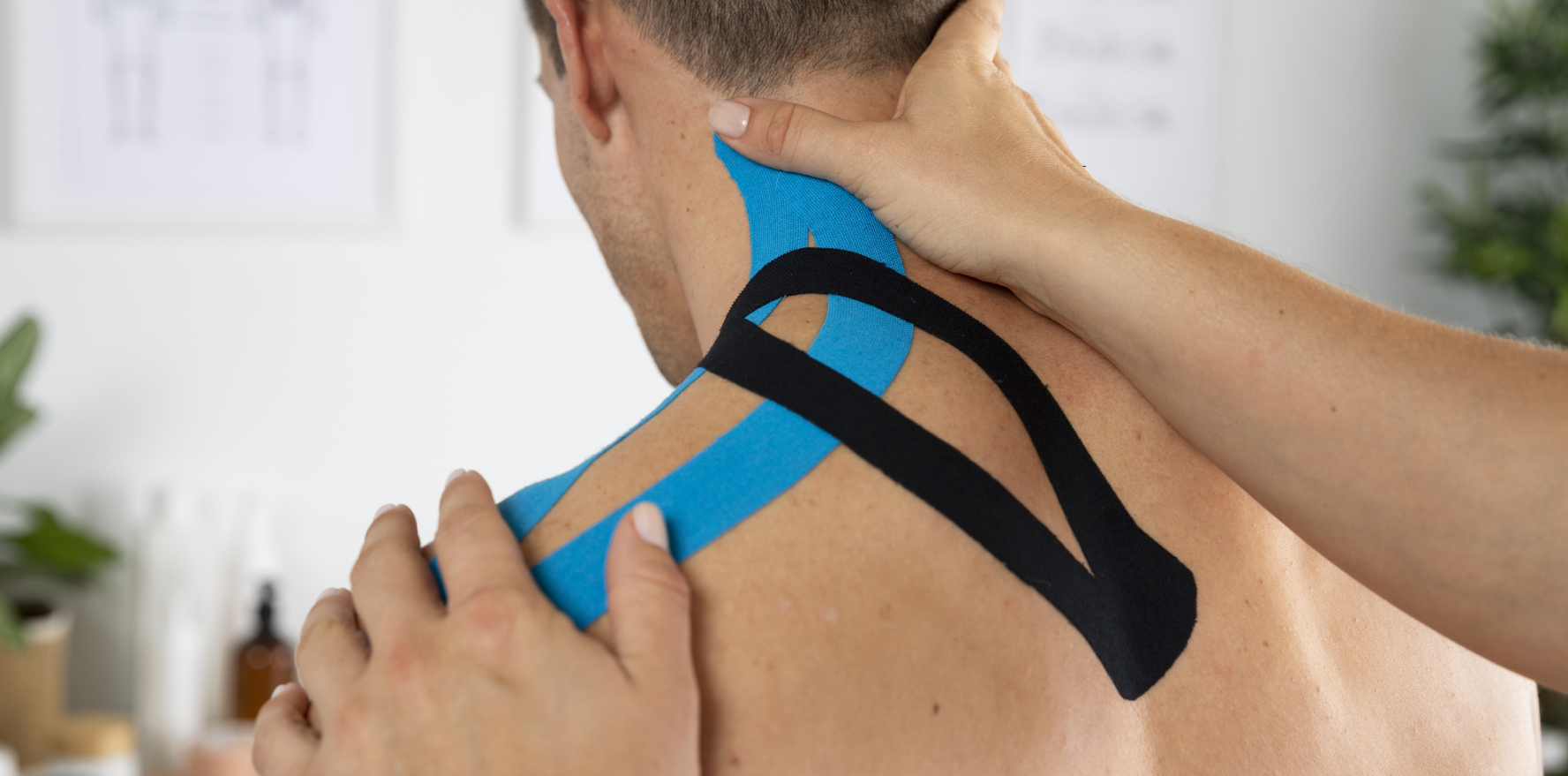Kinesiology Taping Therapy Explained
Kinesiology Taping also known as K-Tape is a therapeutic technique that aids in the body’s natural healing process by providing support and stability to muscles and joints all while allowing full range of motion. Physiotherapists commonly use K-Tape to adjust muscle tone improve posture facilitate lymphatic drainage and correct movement patterns.
What is Kinesiology Taping?
Kinesiology tape is a therapeutic tape that alleviates pain reduces swelling and enhances mobility. It involves strategically placing strips of the tape on the body to address specific therapeutic needs.
Different Types of Kinesiology Taping
Kinesiology tape can be applied in various shapes including "Y" "I" "X" "Fan" "Web" and "Donut". The specific shape used depends on the muscle affected and the desired outcome of the therapy.
"Y" Tape
This design wraps around the target muscle to either inhibit or facilitate muscle activity.
"I" Tape
Ideal for treating acute injuries and correcting body alignment.
"X" Tape
Used when the origin and intersection of the muscle change with movement.
"Fan" / "Web" Tape
Effective for edema treatment keeping the tape's ends intact in a fan shape.
"Donut" Tape
Applied for edema this tape has overlapping strips and a central cut-out for targeted treatment.
How Does Kinesiology Taping Function?
The tape is made from stretchable water-resistant materials such as cotton and nylon which allow it to mimic the elasticity of human skin. When applied it lifts the skin slightly creating space between the skin and underlying tissues. This provides sensory feedback to the brain improving various physical responses.
Steps for Applying Kinesiology Tape
Ensure the area is clean and dry before applying the tape.
Trim excess hair to promote better adhesion.
Apply the tape with slight tension at the edges to secure it properly.
Stretch the tape to 75% of its length then let it settle gently.
Rub the tape to activate the adhesive ensuring a secure attachment.
How to Remove Kinesiology Tape
To safely remove the tape apply lotion or oil to loosen the adhesive. Gently peel the tape off the skin to avoid irritation.
Possible Side Effects of Kinesiology Taping
While rare some individuals may experience skin allergies to the tape. It is advised to test the tape on a small patch of skin before full application to minimize the risk of allergic reactions.
Conditions Addressed by Kinesiology Taping
Muscle Pain & Swelling
This therapy can help alleviate pain and reduce swelling in areas like the neck shoulders and hips.
Improving Posture
Helps correct postural imbalances and supports weakened areas throughout the body.
Athletic Performance
Boosts performance by reducing muscle fatigue and accelerating recovery.
Important Precautions and Contraindications
- Avoid using on areas with tumors infections or open wounds.
- Do not apply if there are allergies skin conditions or if the person has diabetes.
Application Areas of Kinesiology Tape
This technique is effective for addressing conditions such as muscle pain swelling and postural issues across areas like the neck shoulders back and knees.
Enhancing Performance
Kinesiology taping is frequently used by athletes to enhance their performance speed up recovery and support muscle function during physical activities.
